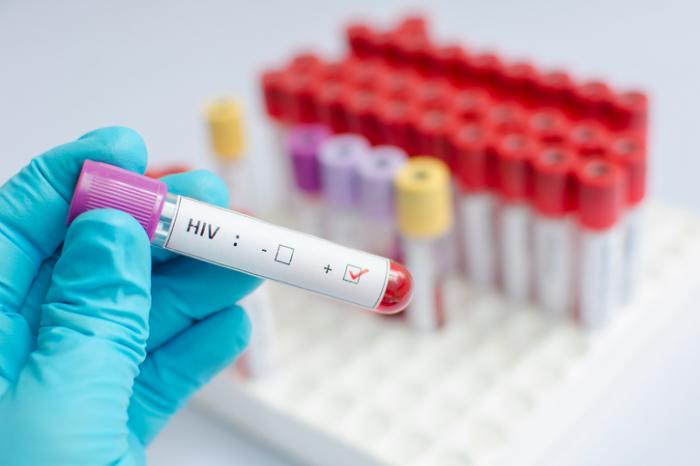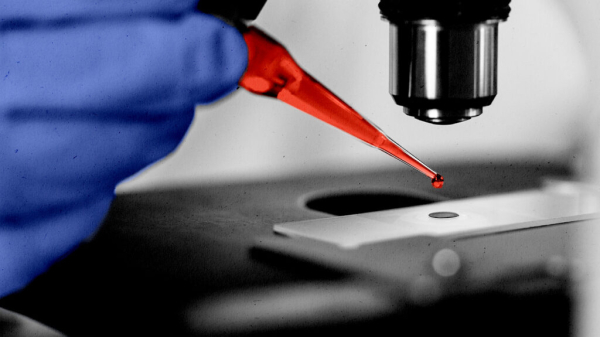Site uses cookies.
Learn moreHIV vs. AIDS: What is the difference?
11 August 2022

What is the difference between HIV and AIDS? HIV is a virus that can be…
HIV infection and AIDS are not the same condition, and they are not the same diagnosis.
HIV is a virus that attacks a type of white blood cell called a CD4 cell in the body’s immune system.
It reduces the body’s ability to fight infection and illness. The body can fight off many viruses, but some of them can never be completely removed once they are present. HIV is one of these.
However, treatment with antiretroviral therapy can minimize the effect of the virus by slowing or halting its progression. Treatment can now reduce the amount of virus in the bloodstream to levels where it is no longer detectable. This means the body remains healthy, and the virus cannot be transmitted.
AIDS is a syndrome, or range of symptoms, that may develop in time in a person with HIV who does not receive treatment. A person can have HIV without developing AIDS, but it is not possible to have AIDS without first having HIV.
How is HIV different from AIDS?
People who follow an effective treatment regimen are unlikely ever to develop AIDS.
Left untreated, however, HIV continues to damage the immune system.
This increases the risk of developing an opportunistic infection or health condition. Some of these conditions can be life-threatening.
Opportunistic infections and diseases
The Centers for Disease Control and Prevention (CDC)Trusted Source define opportunistic infections as “infections that occur more frequently and are more severe in individuals with weakened immune systems.”
Examples of opportunistic infections and other diseases that can develop in those with HIV include:
- cancers, such as invasive cervical cancer, lung cancer, Kaposi’s sarcoma, carcinomas, and lymphomas
- candidiasis, a fungal infection of the throat or lungs
- cytomegalovirus, a viral infection that can cause blindness and other complications
- pneumocystis pneumonia, a fungal form of pneumonia that can be fatal
- toxoplasmosis, a parasitic infection of the brain
- tuberculosis (TB), a bacterial infection of the lungs
- cryptococcosis, a fungal infection that can lead to pneumonia
There may also be co-infections, which is when two infections tend to occur together, for exampleTrusted Source, TB and cryptococcal disease, or a combination of TB, hepatitis B, and hepatitis C.
AIDS: Stage 3 of HIV infection
AIDS is the final stage (stage 3) of HIV infection. It is diagnosed based on a CD4 cell count or the development of one or more opportunistic infections. Stage 1 is the acute stage of HIV and stage 2 is the clinical latency stage. More information on these two stages is included later in the article.
The CD4 cell count in healthy individuals ranges from 500 to 1,600 cells per cubic millimeter of blood (cells/mm3). According to AIDS.gov, those with HIV are considered to have developed AIDS when their CD4 cell count drops to under 200 cells/mm3.
Without medical treatment, AIDS typically develops between 2 and 15 yearsTrusted Source after contracting the HIV virus.
The rate at which the virus progresses depends on many factors, including the patient’s age, general health, genetics, the presence of other infections, and standard of health care.
Some people with the HIV virus will never develop AIDS. Those who use medication are unlikely ever to have it.
What does undetectable mean?
Current treatment can reduce levels of the HIV virus to the extent that levels of virus in the blood are too low to be significant. These levels are undetectable.
While the virus is undetectable, it does not affect the person’s daily life, and it will not necessarily shorten their lifespan. At this point, the virus is also untransmittable. It cannot be passed on to another person.
If a person seeks treatment in the early stages and follows it throughout their life, they can usually expect to live as long as a person without HIV.
Causes of HIV and AIDS

HIV may be transmitted in a number of ways such as through unprotected sex and during childbirth.
AIDS was first recognizedTrusted Source as a distinct condition in 1981.
Health workers started noticing that an unusual number of opportunistic infections and cancers appeared to be affecting particular groups of people.
Once people had the virus, their immunity to certain diseases would decrease over time, and the syndrome, AIDS, would develop.
The cause of the problem was traced back to a retrovirus, the human immunodeficiency virus, HIV-1.
HIV-1 is transmitted between humans through the exchange of bodily fluids.
This can happen through:
Sexual contact: HIV can be passedTrusted Source from one person to another through condomless oral, anal, or vaginal intercourse, if one partner has HIV levels in their blood that are detectable, in other words, above 200 copies per milliliter.
Pregnancy or childbirth: A mother who has the HIV virus, or who has developed AIDS, may pass the virus to her child during pregnancy, childbirth, or even through breast-feeding.
Blood transfusion: Nowadays, the risk of passing on the virus in this way is extremely low in developed countries, because there are strict screening systems.
Syringe and needle use: Sharing equipment for injecting drugs with others increases the chance of getting the virus.
Those who need to take special precautions include:
- anyone who deals with needles or injects medication or other drugs
- health workers who deal with sharps
- those who give and receive tattoos and piercings
It is essential to follow specific guidelines when using and disposing of needles and other sharp objects that may pierce the skin.
PrEP can offer protection
People who do not have HIV but who are at risk of contracting the virus can protect themselvesTrusted Source through pre-exposure prophylaxis (PrEP).
Under the brand name Truvuda, this pill contains two medications — tenofovir and emtricitabine — that can stop the virus from taking hold, even if exposure occurs.
According to the CDC, consistent use of PrEP can reduce the chance of infection by up to 92 percent.
According to the 2019 guidelines from the U.S. Preventive Services Task Force, only people with a recent negative HIV test result are suitable candidates for PrEP. Those with a high risk of HIV should take PrEP once per day.
Symptoms of HIV and AIDS
The symptoms of HIV vary widely. They depend on the individual, management of the virus, and the stage of the condition.
Acute stage symptoms
In the first stage of HIV, 2 to 4 weeks after getting the virus, people can experience flu-like symptoms including:
- aching muscles
- chills
- fatigue
- fever
- mouth ulcers
- night sweats
- rashes
- sore throat
- swollen lymph nodes
Not everyone with HIV will experience these symptoms. Some people do not experience symptoms for 10 years or more.
Clinical latency stage symptoms
During stage 2, the virus is active but reproduces at very low levels. At this stage, there may be only mild symptoms, or none at all.
Medication can help stop the virus from progressing and keep it in this stage. It can reduce the levels of the virus so that they are undetectable, cannot be passed on, and have no impact on the person’s health.
AIDS symptoms
AIDS is different from HIV, and it is a distinct diagnosis, although it is considered to be the third and final stage of the virus.
It happens because the immune system becomes susceptible to a range of infections.
Symptoms at this stage are related to the various infections that may develop. They can vary greatly.
Some of the more common symptoms include:
- blotches under the skin or in the mouth and nose
- blurred vision
- chronic diarrhea
- continuous swelling of the lymph glands
- extreme fatigue
- fever that keeps returning
- neurological issues including memory loss
- pneumonia
- rapid weight loss
- sores in the mouth, anus, or genitals
The symptoms associated with AIDS vary widely, and a diagnosis cannot be made on this basis. Tests will be needed to make a formal diagnosis.
Diagnosis
The symptoms alone cannot show that a person has either HIV or AIDS. This is because they vary widely and they can also be a sign of other conditions.
Diagnosis of HIV

HIV is diagnosed with a blood test, and early testing is always recommended.
HIV is diagnosed by a blood test or oral swab that looks for the presence of antibodies produced by the body in an attempt to fight the virus, as well as the proteins produced by the virus during replication.
The time taken for these antibodies to show up in blood can range from several weeks to several months.
Repeat testing may be necessary, depending on the initial time of exposure.
However, early testing is always advisable, as an appropriate treatment plan can then be implemented to help stop further progression of the virus.
Those who get tested early after exposure are at a lower risk of transmitting the virus to others, as they can receive effective treatment.
Self-testing kits for HIV are available for purchase online, but users should ensure they are approvedTrusted Source by the United States Food and Drug Administration (FDA).
Diagnosis of AIDS
If a person has a diagnosis of HIV and they then receive a CD4 cell count result of under 200 cells/mm3 or are experiencing certain opportunistic infections, they will have a diagnosis of AIDS.
Treatment
Proper treatment plans and early intervention mean those with HIV can enjoy a good quality of life. Treatment will be provided by a team of professionals, not only doctors.
In the past, a person with HIV could develop AIDS within a few years. Now, many people with HIV will never develop AIDS, because effective treatment is available. Without treatment, a person who develops AIDS can expect to live for another 3 years, unless they experience a life-threatening complication.
Treatment consists primarily of medication, including antiretroviral therapy (ART). Once treatment starts, it is important to continue, or drug resistance can develop.
People with either HIV or AIDS normally use a combination of highly active antiretroviral therapy (HAART) drugs that help to slow the progression of the virus.
This medication is adjusted to suit each individual, and it needs to be taken for life.
HIV prevention
Several steps can be taken to prevent contraction of HIV. These include:
Pre-exposure prophylaxis (PrEP): Taken regularly, this can prevent HIV from developing, even if a person is exposed to the virus.
Post-exposure prophylaxis (PEP): This is an emergency treatment given to reduce the likelihood of HIV infection after exposure to the virus. To be effective, it should be taken within 72 hours of exposure, and the full 28-day course of treatment completed. The World Health Organization (WHO) estimate that PEP can reduce the risk of HIV infection by over 80 percentTrusted Source.
Using condoms: Many infections, including HIV, can be spread through unprotected sexual intercourse. Using condoms can help protect against many health problems.
Taking steps during pregnancy: If HIV is present during pregnancy, medications can help prevent the virus from affecting the child. Additional steps include cesarean delivery and bottle feeding rather than breast-feeding in certain circumstances. A health provider can advise on the best option for each individual. Effective pre-natal treatment means that many women with HIV have healthy babies who do not have HIV.
Avoiding sharing needles: Needle exchange programs exist to reduce the need to share syringes and needles.
Reducing exposure to bodily fluids: Health workers should use gloves, masks, and other forms of barrier protection to reduce the chance of exposure to conditions that may be passed on through blood, including HIV. Other precautions include thoroughly and regularly washing the skin after contact with bodily fluids.
A person who has a diagnosis of HIV can delay or prevent AIDS from developing by seeking early treatment and following the treatment plan as recommended.
It is also important to avoid exposure to other infections and to maintain a healthful lifestyle to support the immune system.
Article Source: https://www.medicalnewstoday.com/articles/316019#hiv%20prevention



